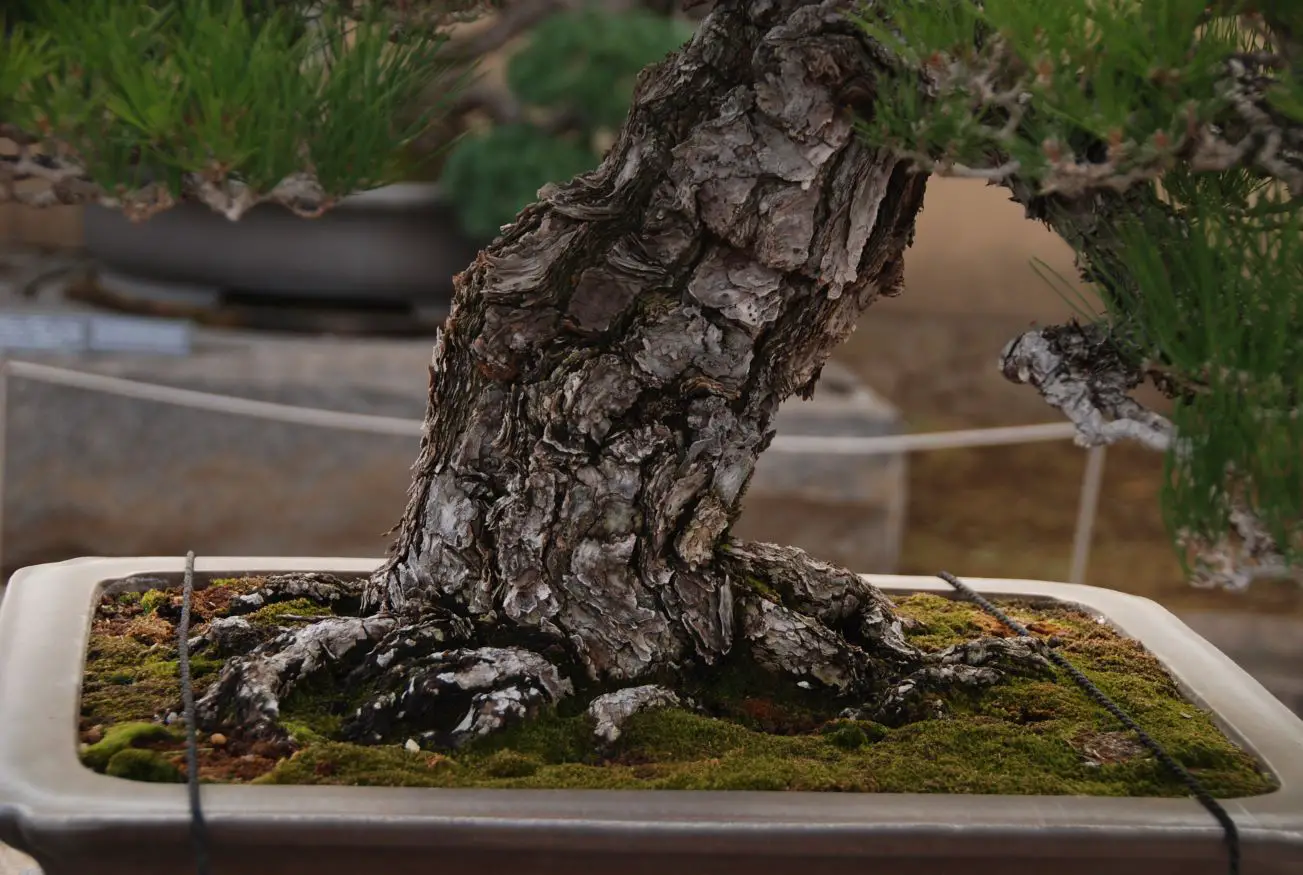Common bonsai tree bugs
Just like any other plant, bonsai trees can be susceptible to a variety of pests and diseases that can cause serious damage or even death if left untreated.
There are 2 major types of bugs that cause damage to your bonsai trees, which are as follows:
- Plant-eaters: Bugs that feed on leaves, branches and roots.
- Sap-suckers: Bugs that suck sap from trunks, branches, and leaves. Their damage causes leaves to curl, wilt, and develop spots, leading to a decline in tree vigor.
Here are some common bugs that can affect your bonsai trees.
Aphids

Aphids
Sap-sucker
Appearance: Very versatile in appearance but all have small, soft- and pear-shaped bodies.
Symptoms: Stunted growth, distorted leaves, a buildup of honeydew (a clear, sticky substance).
Spider Mites
Sap-sucker
Appearance: Oval-shaped bodies, typically less than 0.04 inches (1mm) in size and can vary in color from red or brown to yellow or green.
Symptoms: Leaves turning yellow or brown and become distorted, fine webbing on the leaves and branches.
Scale Insects
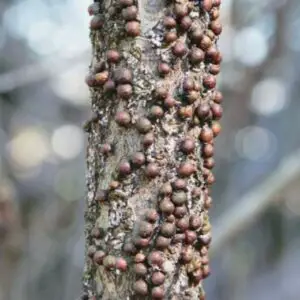
Scale insects
Sap-sucker
Appearance: Small, oval-shaped, hard, protective shells.
Symptoms: Yellowing or wilting of leaves, a buildup of honeydew (a clear, sticky substance).
Mealybugs
Sap-sucker
Appearance: Soft-bodied and white, cottony appearance.
Symptoms: Yellowing or wilting of leaves, a buildup of honeydew (a clear, sticky substance).
Whiteflies
Sap-sucker
Appearance: Small flying insects with white, powdery wings that are approximately 1/16 to 1/8 inch long.
Symptoms: Yellowing or wilting of leaves, a buildup of honeydew (a clear, sticky substance).
Caterpillars
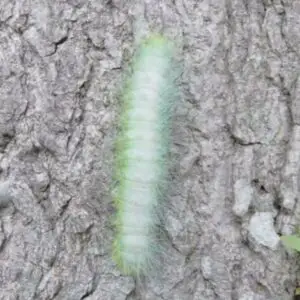
Caterpillars
Plant-eaters (mostly leaves)
Appearance: Worm-like appearance
Symptoms: Damage to the leaves and bark by chewing through them.
Beetles
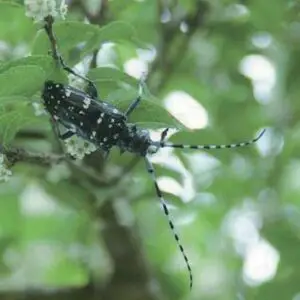
Beetles
Plant-eaters (Leaves, stems, roots, seeds, fruits or wood)
Appearance: Brown/black, long and slender body with two antennae.
Symptoms: Damage to the leaves and bark by chewing through them.
Other remarks: Beetle larvae can also do damage to trees. Deciduous, flowering, and fruiting bonsai trees are more prone to beetle damage than coniferous trees.
Common bonsai tree diseases
What are bonsai tree diseases?
What are the causes of bonsai tree diseases?
Bonsai tree diseases are caused by living organisms, such as bacteria, viruses, and fungi, interacting with a susceptible host and favorable environment. They may cause deterioration of the trees’ overall health such as lack of growth and wilting in their form or physiological functions.
How do bonsai trees get infected?
Some diseases are specific to certain tree species, while others affect multiple species. There are predisposed unique and internal factors that facilitate the onset of diseases, such as resistance to certain pathogens or susceptibility to environmental factors like dryness or humidity.
Environmental factors, such as soil conditions, drought, and air pollution, can make trees more susceptible to disease.
For a tree to get sick, these three factors need to be present: the tree itself (the host), the germ that causes the disease (pathogen), and the environment. If any one of these is not suitable for the disease to occur, then it will not manifest.
This means that even if a tree is susceptible to the disease-causing pathogen, it will not get sick if the environment is not suitable for the pathogen to grow or for the tree to be infected.
That is why it is crucial to understand how these three things interact when trying to prevent or treat tree diseases.
types of diseases
There are 3 types of tree diseases based on the affected parts of trees.
- Leaves and new shoots: leaf spots, powdery mildew, anthracnoses, rust, bacterial wilt
- Branches and trunk: canker and diebacks, bark diseases like anthracnose
- Roots: various root rots, nematodes
Symptoms of sick bonsai
Unlike negative changes caused by weather conditions that may be invisible, diseases in trees can be recognized by various symptoms. These symptoms that appear in trees in response to pathogens often exhibit certain changes depending on the pathogen.
The main symptoms of bonsai tree diseases include:
- spots (yellow, brown, black),
- leaf/bark discoloration,
- wilt,
- hypertrophy (enlargement of tissues),
- necrosis (tissue death),
- mummification,
- galls,
- trunk rot,
- bud withering,
- branch dieback,
- cankers,
- decay, and,
- secretion.
Common bonsai tree diseases
Powdery Mildew
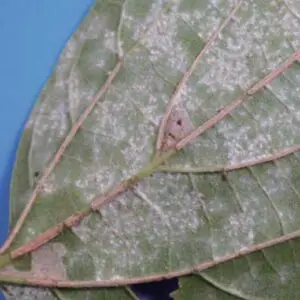
Powderly mildew
Symptoms: White, powdery coating on the leaves and stems
Cause: Fungi
Susceptible bonsai trees: Oak, beech, maple
Anthracnose
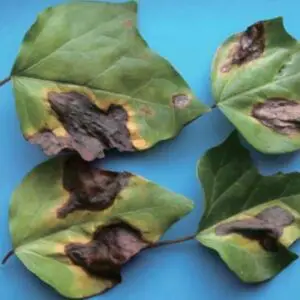
Anthracnose
Symptoms: Brown or black spots on the leaves
Cause: Fungi
Susceptible bonsai trees: Various trees
Rust disease
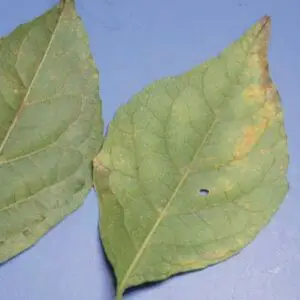
Rust disease
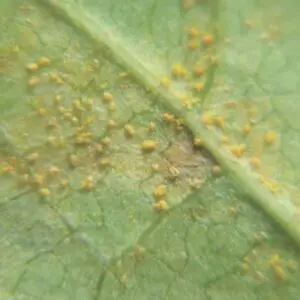
Rust disease
Symptoms: Yellowing leaves, brownish-red or orange spores on the undersides of leaves
Cause: Fungi
Susceptible bonsai trees: Azalea, oak, pine, fir, cherry blossom, plum tree, apple
Leaf spot

Leaf spot
Symptoms: Small, discolored (yellow/brown), circular or irregular-shaped spots on the leaves.
Cause: Fungi
Susceptible bonsai trees: Azalea, oak, pine
Blight
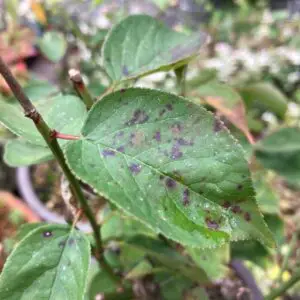
Black spots
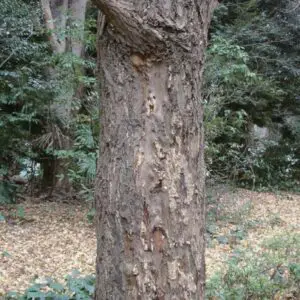
Blight
Symptoms: Wilting, discoloration or browning of leaves or stems
Cause: Bacteria
Susceptible bonsai trees: Maple, cherry, ginkgo
Gall disease (cankers)

Gall
Symptoms: Round or irregular growths on the branches, twigs, and trunks (galls).
Cause: Bacteria/fungi
Susceptible bonsai trees: Fir, larch
Root rot
Symptoms: Yellowing leaves, wilt, twig and branch dieback, general decline, reduced or stunted growth.
Cause: Fungi
Susceptible bonsai trees: Various trees
How to get rid of bugs on bonsai trees
One of the biggest problems that bonsai tree owners like you and me face is dealing with bug infestations. Bugs can damage your bonsai trees’ leaves, trunk, and roots, and if left unchecked, can eventually kill your tree.
Here are 3 steps to get rid of bugs on bonsai trees:
- Identify bugs
- Use non-chemical options
- Use chemical options
How to identify bugs on bonsai trees

Early detection and treatment are keys to preventing serious infestations on your bonsai trees. Remember that not all bugs can be easily seen with the naked eye. Take a little bit of time every day, especially when the weather gets warm, to see if there isn’t anything wrong with your trees.
Do research on common bugs on bonsai trees
Familiarize yourself with the common pests that affect bonsai trees in your area. This will help you identify any pests you may encounter.
Check the leaves
Look closely at the leaves for any discoloration, spots, holes, or webbing. Touch the leaves gently if you suspect anything. Some bugs leave a sticky residue (honeydew) on the leaves.
Inspect the branches and trunk
Check the branches and trunk for any signs of damage or discoloration. Look for any bumps, swellings, or holes that could indicate the presence of insects.
Look for visible insects
Some insects may be visible on the leaves, branches or trunk. Check for any tiny moving insects or their eggs.
Non-chemical options to eliminate bugs
There are several non-chemical options that you can use to get rid of bugs on your bonsai trees. These are easy to do and do no harm to your bonsai trees.
Remove by hand
If your bonsai tree only has a few bugs that you can see, you can try to remove them manually.
Wear gloves or use tweezers when doing this and never touch them with a bare hand. Use a cotton swab dipped in alcohol to remove any eggs that you see or simply squeeze them with your fingers.
Wash with spray
Use high-pressure water spray to wash your bonsai tree, including the leaves, branches and trunk. This can help dislodge any bugs that are hiding on your tree.
Be careful not to spray on soil (which can be washed away) or put too much pressure on the trees (which can be damaged).
Prune affected areas
If you notice that only small areas of your tree are affected by bugs, prune those areas. This can help prevent the bugs from spreading to other parts of your tree.
It is wise to use chemical options in addition to pruning affected areas because you can always miss small ones and eggs, and the bug population would grow back in time.
Chemical options to eliminate bugs
If non-chemical options don’t work, you can consider using chemical options to get rid of bugs on your bonsai tree. Insecticide in particular is very powerful and effective but it can be harmful to your trees if you do it wrong and should be used with caution.
Here are some chemical options.
Neem Oil
Neem oil is the best chemical yet natural way that I can think of for getting rid of bugs on your bonsai tree.
What is neem?
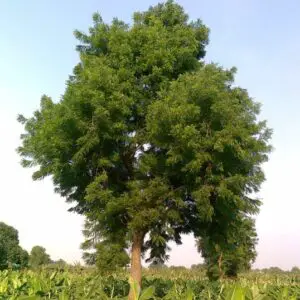
Neem Tree
(Picture taken by Rsika)
Neem or Indian lilac is a tree native to the Indian subcontinent. Neem trees have been used in the traditional medicine of India for centuries and their oil is excellent for pest control.
How does neem work?
Neem oil does not kill insects, per se. It contains a compound called azadirachtin which acts as an insect repellent and growth inhibitor.
When insects come into contact with neem oil, azadirachtin disrupts their hormone system and prevents them from feeding and reproducing. This leads to a decline in their population and eventually eradication. Neem oil does not do harm to most beneficial insects when used properly.
For what insects do neem oil work?
Neem oil works on aphids, spider mites, beetle larvae, caterpillars, leaf hoppers, leafminers, mealy bugs, and whiteflies.
What is so good about neem oil?
Neem oil is safe for plants, including bonsai trees, humans as well as pets (it is slightly toxic to fish and I don’t know about birds). I am using it for my bonsai trees as well as blueberries and potatoes in my garden and it works perfectly.
What makes neem more perfect is that neem oil has antifungal and antibacterial properties as well, making it effective against a wide range of pests and diseases besides insects.
What is not good about neem oil?
The only downside of neem oil is that it takes time to work. In my experience, it takes at least 2 to 3 times spraying before you see a decline in the bug population if it is large enough.
And you may notice some smell as well. I don’t think it’s particularly bad but it’s a distinctive smell. You may not like it, especially when you put your bonsai trees indoors.
How to use neem oil
Always follow label instructions. Mix neem oil with water in a spray bottle and apply it to your bonsai trees. Make sure to spray top to bottom including branches, trunk and inside the foliage.
If you purchase pure neem oil, put a small amount of soap water with neem oil so that oil can be mixed with water well. There are products in the market like the following that are ready to use simply by mixing them with water.
You have to repeat the process at least several times to get rid of bugs because azadirachtin, a major insect-repellant component of neem oil, is rapidly broken down when exposed to sunlight. On plant leaves, its half-life is 1 to 2.5 days.
Also, you have to make the neem oil solution each time you use it because the half-life of azadirachtin is from 48 minutes to 4 days in water.
It might be difficult to buy neem oil at ordinary gardening shops as it did for me but you can buy one from the online store at Bonsai Boy (link to neem oil concentrate here).
Insecticides
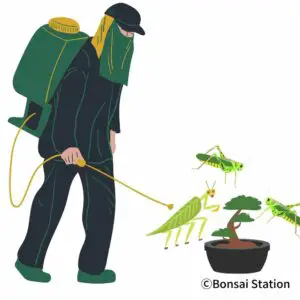
Choosing the right insecticide for bugs on your bonsai tree depends on various factors such as the type of bug, the severity of the infestation, and the type of bonsai tree you have.
Here are tips on how to choose an insecticide for your bonsai tree.
Identify the bug
Before choosing and using an insecticide, it is essential to identify the bugs that are infesting your bonsai tree. This will help you select the right type of insecticide and application method.
I have put a list of bugs that commonly infest bonsai trees in the section above. You can use the list above or look at a website like this of the University of Minnesota Extention to identify the bugs.
Select a targeted insecticide
Choose an insecticide that targets the specific bugs that are infesting your bonsai tree. Different insecticides work on different types of bugs. It works for certain kinds of bugs but may not for others.
Make sure to read the label carefully to ensure that the product will effectively target the bugs you are dealing with.
Follow the instructions
Always follow the instructions on the insecticide label carefully, including the dosage and application method. Do not use more than the recommended amount, and apply the insecticide more frequently than instructed as it may harm your bonsai trees and/or you.
Rotate several insecticides
If you are using only one insecticide, insects can develop resistance to the chemical compound over time. It is not a perfect solution to this problem but using multiple pesticides in rotation can be an effective strategy to prevent the development of resistance to pests.
Think about prevention
Prevention is the best way to keep bugs away from your bonsai tree. It is way easier and much less painstaking. Keep your bonsai tree healthy and well-maintained. Inspect regularly for signs of pests and address any infestations as soon as possible to prevent them from spreading.
How to treat bonsai tree diseases
Bonsai trees can be affected by various diseases, such as root rot, fungal diseases, and bacterial infections. Identifying the disease correctly is crucial for selecting the right treatment.
Here are 3 steps to treat diseases on bonsai trees:
- Identify the disease
- Use non-chemical options
- Use chemical options
How to identify diseases on bonsai trees
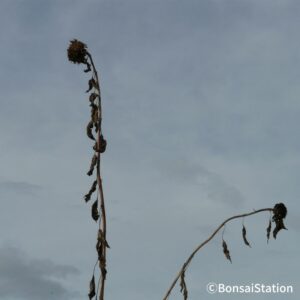
Look for symptoms
The first step in identifying a disease is to look for any symptoms on the tree. Common symptoms include discoloration of leaves, wilting, deformation, cankers, or abnormal growth.
Identify the affected tree part
After observing symptoms, identify which part of the tree is affected, such as leaves, branches, or roots.
Do research on common bonsai diseases
Once you have gathered information about the symptoms and patterns, look for possible diseases that match your findings.
I have put a list of common bonsai diseases in the section above. There are many online resources and guides available like this on the University of Arkansas Extension, for instance, for identifying bonsai tree diseases as well.
Non-chemical options to treat diseases
There are not many non-chemical options to treat bonsai tree diseases as diseases are caused by bacteria, viruses or fungi and it is not always easy to tell which one caused diseases from just symptoms.
That said, here are some non-chemical procedures you can take.
Remove infected plant parts
Remove the infested parts carefully using a sterile tool. This may include leaves, branches, or even a part of the trunk if the disease has progressed too far. Do not use your hands because you may touch other trees later, risking the disease to spread.
This removal may or may not work because we can only take out infected parts that are visible. We actually cannot see bacteria, viruses and fungi that cause the disease and they may have spread into different parts of your tree but stays invisible for now.
Improve growing conditions
Diseases often occur when the growing conditions for the tree are not optimal. Make sure that your bonsai is getting enough water, light, airflow and nutrients. If your tree gets healthier and strong, it may recover on its own.
Chemical options to treat diseases
Neem oil is a chemical yet the best natural way that I can think of for treating diseases on your bonsai tree.
Neem oil
Neem oil, which is derived from the seeds of the neem tree, has antifungal and antibacterial properties that can help control certain bonsai diseases. It can be applied by mixing it with water and spraying it on the affected areas of the tree.
Please read the section above (“Chemical options to eliminate bugs”) for more about neem oil.
Use fungicides or bactericides
Depending on the type of disease, you may need to use a fungicide or bactericide. These are chemicals that kill the pathogen causing the disease.
Here is a step-by-step guide for using fungicides or bactericides on bonsai trees.
Identify the problem
Before using any fungicide or bactericide, you need to make sure that the problem your bonsai is facing is actually caused by a fungal, viral or bacterial disease. Look for symptoms such as leaf spots, discoloration, wilting, and cankers.
Choose the right product
There are many different types of fungicides and bactericides available in the market. So it is important to choose one that can treat the type of disease affecting your bonsai tree.
Read the label carefully to make sure the product is safe to use on your bonsai species. Some fungicides and bactericides can kill the disease but are too strong for the species of bonsai trees you are trying to treat.
Follow the instruction
Follow the instructions on the label carefully. Avoid spraying during hot, sunny conditions or when the wind is strong, as this can cause the solution to evaporate or drift onto unintended areas.
Be sure to continue monitoring your bonsai tree for any signs of disease and take appropriate action if necessary.
Rorate several fungicides/bactericides
If you are using only one fungicide/bactericide, germs can develop resistance to the chemical compound over time. It is not a perfect solution to this problem but using multiple pesticides in rotation can be an effective strategy to prevent the development of resistance to pests.
Prevent further spread
Once you have treated the disease, it is important to prevent it from spreading further. This may include isolating the infected tree, cleaning tools and equipment, and avoiding cross-contamination with other trees.
How to prevent pest and diseases on bonsai
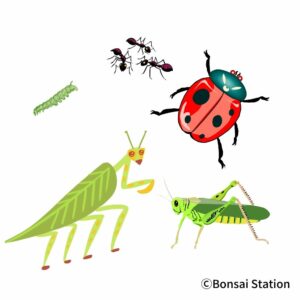
Preventing pests and diseases from infecting your bonsai trees is key to maintaining a healthy tree. It is way easier than treating or eradicating pests once they occur.
For this, regular checks and maintenance are crucial. By keeping a close eye on your trees and addressing any issues when they arise, you can prevent problems from becoming more serious and causing irreversible damage.
Check and monitor your trees
Observe your trees regularly and check if there is anything wrong, such as discoloration, spots or wilt. Look at your trees from all directions so that you do not miss signs of infection.
Provide proper care and environment
Since the occurrence of bud infection and diseases is influenced by environmental factors, it is important to make sure that the trees’ location and environment are good for them, including good air circulation, enough sunlight, and adequate soil conditions.
Keep your bonsai area clean and free of debris. Remove fallen leaves, deadwood, and other plant debris regularly. This helps prevent pests and diseases from breeding and spreading.
Also, provide them with nutrients as well as pruning and repotting as needed so that they can fight back once infected.
Chemical control
BioAdvanced 3-in-1 Insect, Disease & Mite Control
Think about using chemicals for preventive measures. This product can control both insects and diseases effectively and is safe for bees.
As bonsai trees live in a rather adverse environment (i.e. their root system is confined in a tiny pot), they may not be able to withstand and overcome serious troubles. The aesthetic is another problem. If your bonsai trees were to have a big scar or lose branches because of pests and diseases, they may not be as good bonsai as they used to be.
If you are not sure about using synthetic pesticides, neem oil is a good choice. It does not do any harm to bonsai trees, unlike pesticides, and is environmentally friendly.
Quarantine new plants
When you buy bonsai trees from nurseries or shops, make sure to buy healthy bonsai trees to reduce the chances of pests and diseases. Inspect carefully before purchasing them to avoid bringing in unwanted pests or diseases.
Quarantine them for a period of time before introducing them to your bonsai collection. This helps to ensure that any pests or diseases on the new plant are not spread to other plants.
—–
References
“Neem oil“, National Pesticide Information Center, Oregon State University
All pictures are from “Preservation measures case collection of giant and old trees”, National Institute for Land and Infrastructure Management (Japan)

